The Monterey Fishing Experience
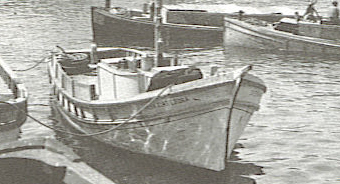
1st Generation Lampara
1st Generation Lampara

A first generation lampara boat. The catch was placed in a large barge, called a liter, and towed behind the boat.
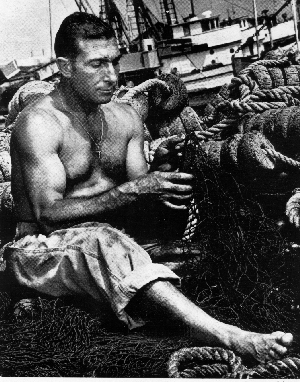 Almost all of the initial Isola delle Femmine immigrants settling in
Martinez and Pittsburg, California, were fishermen. Originally, they
fished the Sacramento River, gill netting salmon. In addition,
several would make the annual trek to Alaska for the short, but
profitable salmon season.
Almost all of the initial Isola delle Femmine immigrants settling in
Martinez and Pittsburg, California, were fishermen. Originally, they
fished the Sacramento River, gill netting salmon. In addition,
several would make the annual trek to Alaska for the short, but
profitable salmon season.
Beginning about 1917, a significant number of the immigrant families began a second migration, this time to Monterey, California. Encouraged and recruited by Pietro Ferranti and the Booth Cannery, they left their gill nets behind to seek sardines. But, they would be more than just participants in this industry. They would, in fact, be its founders.
They originally used boats that closely resembled the fishing craft they had left behind in Sicily. From these small, clipper-bowed boats, they fished a net they had formerly used in Sicily called the lampara. The lampara was a unique and clever tool for snaring school fish. The net consisted of two wing sections attached to a large purse or bag. The net was fished by encircling a school of fish with the wings of the net. It was then retrieved by pulling the wings into the boat. This action caused the bag to open eventually trapping the fish.
By the mid-1920’s, a new generation of lampara boat was evolving. Retaining the clipper bow of its forerunner, this new generation
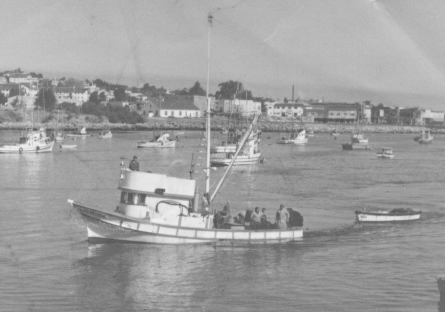
St. George
St. George

The St. George, built by Angelo Siino for Paolo Giamona and family in 1925, was among the first of the second generation lampara boats. The St. George was 42 feet and could carry 10-12 tons on its deck, but it usually towed a liter.
of fishing vessel was larger (some reaching more than 40 feet), wider, and powered by diesel engines. They sported a flying bridge and were equipped with a winch and mast. Like their predecessors though, these new boat also towed barges behind them which were used to carry their catch. These barges, called liters, had a capacities ranging from 10 tons to more than 40 tons.
As the number of canneries increased and the demand for sardines soared, the lowly lampara boat just did not seem adequate. The immigrants, many now joined by their sons, turned to the larger purse seiners which took their name from the net they used. These new boats were a radical departure from the lampara boat. They ranged in length from about 70 feet to 90 feet. They were high, wide and capable of carrying 150 tons or more of sardines. Boats with names like, E.S. Lucido, U.S. Liberator, New Hope, New Marettimo, Vitina A, Providenza, El Cerrito, Western Maid, St. Christropher, and Pacific Star now populated Monterey’s anchorage.
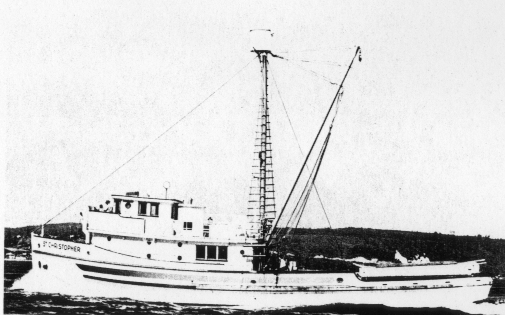
St. Christopher
St. Christopher

The St. Christopher, owned and operated by the Giamona Brothers, Joe, Horace, and John. The St. Christopher sunk in Alaskan waters in 1961
By the late 1940’s, it was apparent that the sardine stocks were dangerously low. By the 1950’s, it was over. The great sardine industry was dead. The sons of the original immigrants (most of the first generation of immigrants were dead or retired) found themselves with huge investments in boats and equipment and little opportunity to profit from their investments. Many sold their boats, and after generations of earning their living from the sea, turned to "shore" jobs. But, not all left their traditional occupation. Some kept their purse seiners, sending them to Southern California to fish for the last of the California sardines or to Central and South America to fish for tuna. Unfortunately, this only postponed the inevitable.
Still, some did what they did best. They returned to their small boats and lampara nets. With the sardines gone, they pursued squid primarily, but also mackerel, anchovies, and herring with an occasional excursion for halibut or albacore.
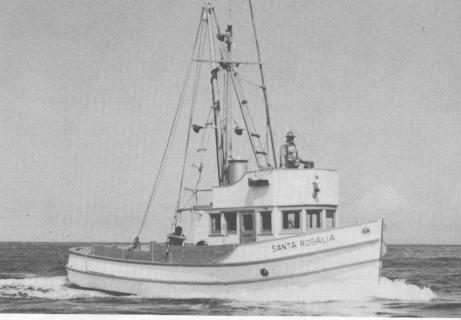
3rd Generation Lampara
3rd Generation Lampara

An example of a third generation lampara boat, the Santa Rosalia, owned and operated by Paul Cutino.
This return to the lampara net spawn a new generation of lampara boats. Looking much like a miniature version of the purse seiners, the new lamparas no longer required barges to carry their catch as they were capable of carrying loads of 10 tons or more.
While the sardine "heyday" may be long gone, Monterey still has a fishing industry. It may not be as large or exciting as it was, but, no doubt, the spirit, fortitude, and sense of adventure of the original Isola delle Femmine fishermen still linger among the boats, piers, and sea shore.
